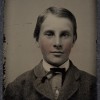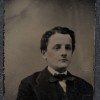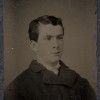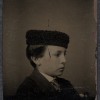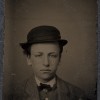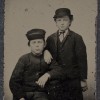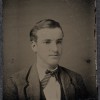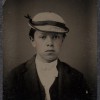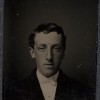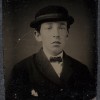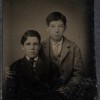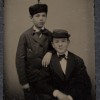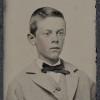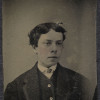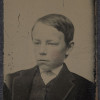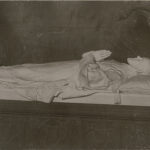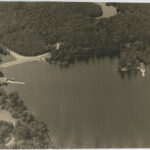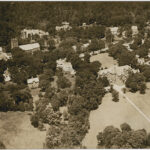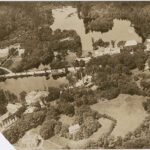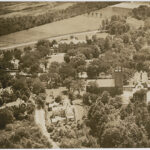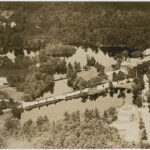Archival Gems: The Gem Tintype Albums of St. Paul’s School
Introduction:
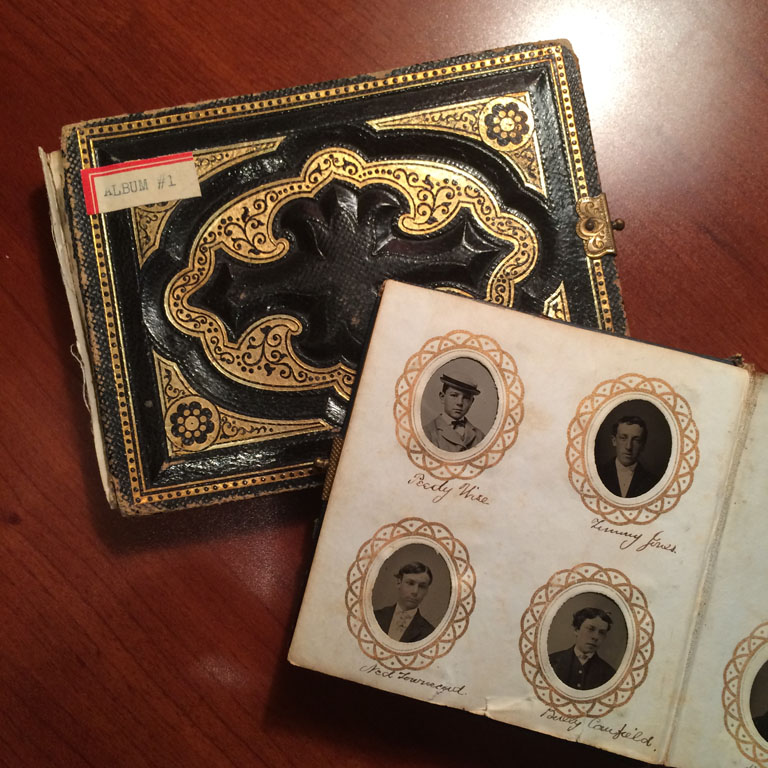
The Canfield and Kane gem tintype albums in St .Paul’s School Archives collection: James Armstrong Canfield is in the lower right corner of the open album page.
Gem Tintypes are tiny photographic images about the size of a postage stamp. For such small photographs they wield a surprising amount of visual impact, due to the sharp precision achieved by the tintype photographic process. Tintypes, also known as ferrotypes and melainotypes, are positive photographic prints – a silver image with a collodion binder – on a lacquered sheet of metal. It is the thin metal sheet that gives them their name, although it is actually made of iron, not tin. Tintypes were first produced in the United States in the late 1850’s, and were a popular, less-expensive, alternative to the leading photographic print of the day, the Carte de Visite. The first gem tintypes were produced in 1862, and were the result of specially made cameras with multiple lenses – capable of making a number of image copies from one exposure onto a single photographic plate. The plates were then cut into small individual images, and specially designed albums would hold the small images in pre-cut album pages.
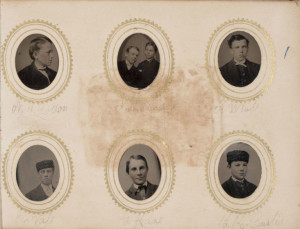
A sample page from the Canfield album: Grenville Kane is in the lower center of the album page.
It is one of these small albums that is part of the St. Paul’s School archives collection, an album that originally belonged to James Armstrong Canfield of the Form of 1871. His personal photograph album of his classmates contains 42 tiny tintypes, measuring 3/4″ wide by 1″ high. Canfield himself was not included in the album images, and there were no other pictures of him found in the archives collection, so while his album provided identified images of so many of his classmates and friends, he himself remained a mystery. Canfield’s gem tintype album was digitized in 2013 and cataloged in the OLDA: Digital Image Archive, where the images became available to the public.
A collector by the name of Stephen Manheimer discovered Canfield’s images online while researching his own album of gem tintypes, and contacted the St. Paul’s School Archives to find out more information. It was discovered that the album he had acquired in an auction in New York was from the same time-frame as the Canfield album, and belonged to one of his friends, Grenville Kane, also of the Form of 1871. Grenville Kane was among the 42 gem tintypes in Canfield’s album. After sharing information about the images in both albums, Manheimer decided to donate his album to the St. Paul’s School Archives. His generous donation added 20 more gem tintypes to our collection – seven of which were unique to the Kane album. Best of all, one of those seven gem tintypes was a picture of James Armstrong Canfield, providing a photograph to go with the name.
This exhibit is a selection of fifteen of the gem tintypes from the Canfield and Kane albums, with information about the individuals depicted. These images provide an interesting view of St. Paul’s School students in the years following the Civil War, with the photographs likely produced between 1868 and 1871.
The following works were consulted during research for this exhibit. Library call numbers are listed for those available for further reading.
Alumni Directory of St. Paul’s School. Concord, NH: Alumni Association of St. Paul’s School, 1956. Print.
Gustavson, Todd. Camera: A History of Photography from Daguerreotype to Digital. New York: Sterling Innovation, 2009. Print. (Ohrstrom: 771.3 G97C)
Pier, Arthur Stanwood. St. Paul’s School 1855-1934. New York: Charles Scribner’s Sons, 1934. Print.(Ohrstrom: 373 Sa2)
Reilly, James M. Care and Identificaiton of 19th-Centruy Photographic Prints. Rochester: Eastman Kodak Company, 2009. Print.
Rinhart, Floyd, Marion Rinhart, and Robert W. Wagner. The American Tintype. Columbus: Ohio State University Press, 1999. Print. (Ohrstrom: 770.9 R47)
Special thanks to Stephen Manheimer for his generous donation of the Grenville Kane Gem Tintype Album to the St. Paul’s School Archives.
Exhibit Quick Links:
(See full exhibit below)
Click on the thumbnails above or the titles below to access the individual entry pages.
Exhibit Entries:
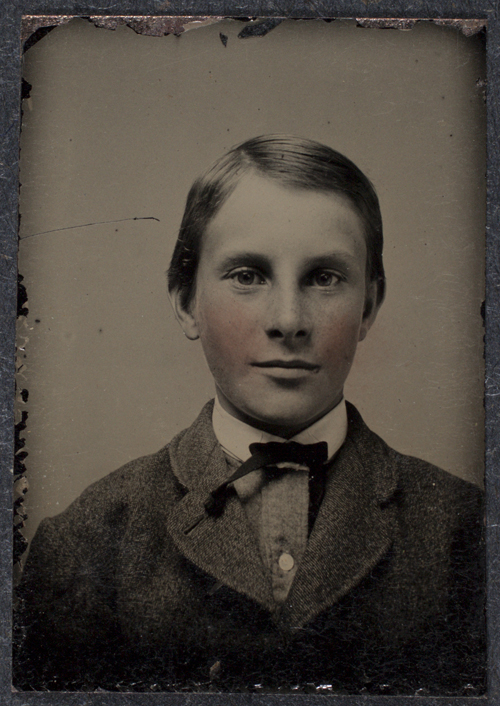
Grenville Kane attended St. Paul’s School from 1867 to 1871 and is a member of the Form of 1871.
His obituary appeared in the Autumn 1943 issue of the Alumni Horae (pg. 125), and is excerpted below:
… Mr. Kane was a sportsman and bibliophile as well as lawyer and financier. Five times golf champion of the Tuxedo Club and an expert billiard player, he was also a devotee of tennis and is said not to have missed a Newport Tennis Week in forty-five years. In the late ’80’s he attracted attention when he sailed the racing yacht Ailsa across the Atlantic to take part in the Cowes Regatta. A collector of first editions, Mr. Kane was an advisor and consultant on rare books for the N. Y. Public Library, the J. P. Morgan Library and the Carter Brown Library, Providence.
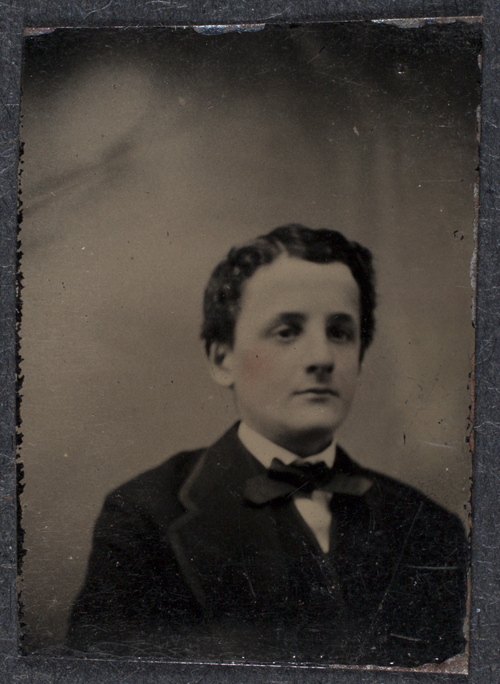
George Hinckley Lyman attended St. Paul’s School from 1864 to 1869 and is a member of the Form of 1869.
His obituary appeared in the Spring 1945 issue of the Alumni Horae (pg. 77), and is excerpted below:
George Hinckley Lyman, the oldest living alumnus of the School, died in Boston, Mass., on May 17, 1945. He was born in Boston, December 13, 1851, the son of Dr. George H. Lyman, a surgeon who served in the Civil War, and of Maria Cornelia Austin. He entered St. Paul’s in 1864, eight years after the founding of the School, and was graduated in 1869. From St. Paul’s he went to Harvard and was graduated with the LL.D. degree in 1877. Mr. Lyman then entered the law office of Ropes, Gray and Loring in Boston but, having trouble with his eyes, left and devoted himself to politics.
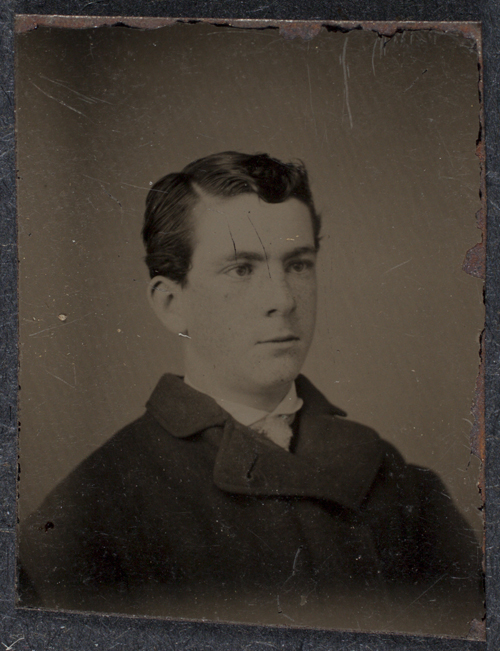
Edward Tattnall Nichols attended St. Paul’s School from 1863 to 1868 and is a member of the Form of 1868.
His obituary appeared in the March 21, 1934 edition of the New York Times (pg. 21), and is excerpted below:
Son of the late Rear Admiral Edward Tattnall Nichols, U. S. N., and Caroline Elisabeth Bowers Nichols, he was born at Pensacola, Fla., where his father was then stationed. He attended the Polytechnic Institute in Brooklyn and later St. Paul’s School, Concord, N. H.
He tried several business ventures while still a youth and then joined the United States Navy, serving in Asiatic waters and in the Korean expedition of 1871.
In 1876, he became connected with the St. Paul & Pacific Railroad. . . During his life, Mr. Nichols held positions as secretary, treasurer and director in a number of railroad companies with which he was associated.
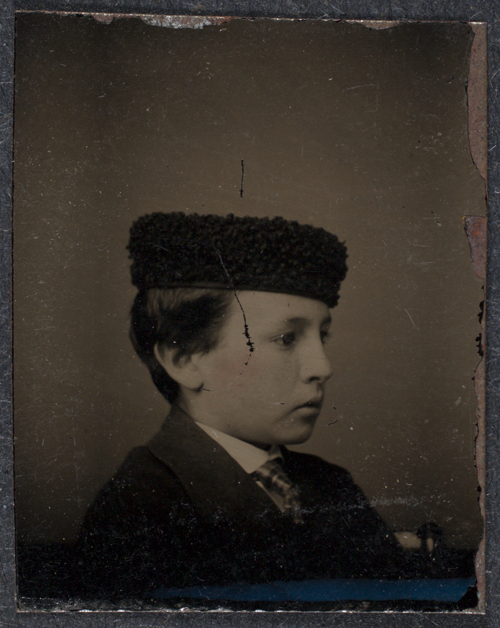
Henry Spencer Cram attended St. Paul’s School from 1868 to 1870 and is a member of the Form of 1869.
The following information about Cram was published in the Harvard College Class of 1873 Seventh Report of the Secretary (pg. 9-10):
He was a graduate of Harvard University and a member of the New York Bar, though in recent years not in active practice, owing to failing health. In 1892 he was married to Miss Winthrop, daughter of Egerton Winthrop. She died in 1893, in London, leaving an infant daughter, who survives her father. . . He was a man of the most delicate feelings, and uniformly gentle and courteous in demeanor.
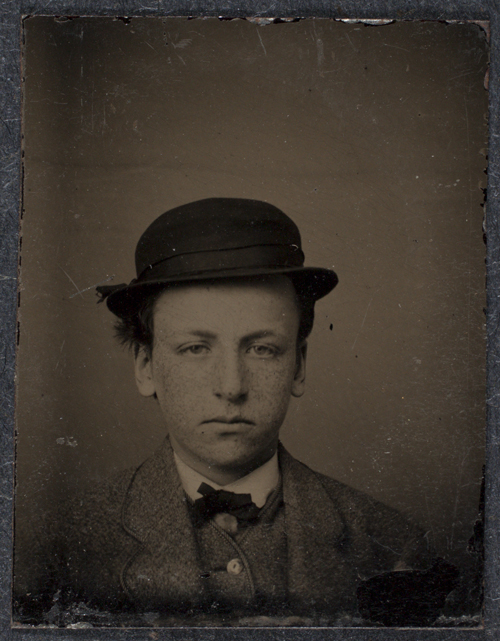
Charles Thomas Clarke White attended St. Paul’s School from 1867 to 1874 and is a member of the Form of 1873. White was a member of the faculty from 1875-1876.
According to Arthur Stanwood Pier’s St. Paul’s School 1855-1934 (pg. 151), in 1871 White was a member of the Ariel crew team, rowing in the 5th position, and competed in the first annual crew race at St. Paul’s School. The Ariel team was made up entirely of Third Formers, and they finished only two seconds behind the winning Halcyons – Shattucks finished in third place due to one of the oarsmen having caught a crab. This first race began the tradition that is still held each Anniversary weekend at St. Paul’s School.
Pier also notes that White was a dedicated Halcyon, during his Sixth Form year in 1874 White donated a 16 inches long silver crew boat to use as a trophy for Race Day. This trophy is still on display today in the trophy case at the boat house.
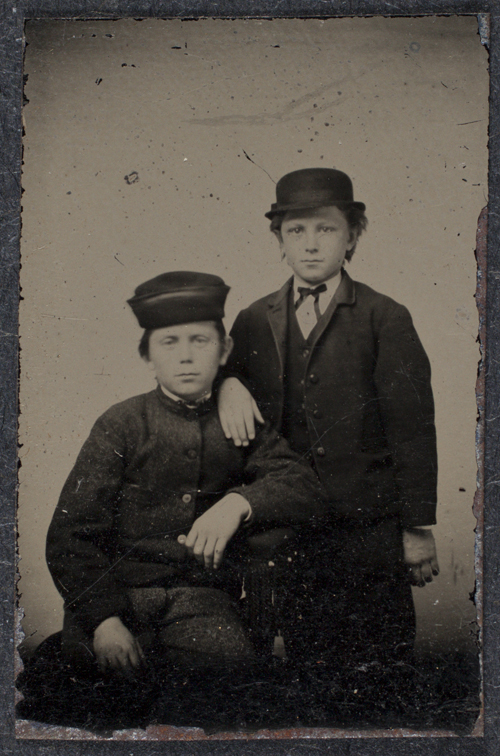
Samuel Millington Miller attended St. Paul’s School from 1867 to 1872 and is a member of the Form of 1871.
Peter Augustus Porter attended St. Paul’s School from 1865 to 1871 and is a member of the Form of 1870.
According to The Biographical Dictionary of the United States Congress, Porter was a Representative for the State of New York in 1907-1908. His grandfather, Peter Buell Porter, was also a Congressional Representative, serving 98 years earlier. Porter graduated from Yale in 1874 and worked in banking in Niagra Falls, NY. After serving in the Sixtieth Congress he “engaged in the study and writing of history of the Niagara frontier”. He died in 1925.
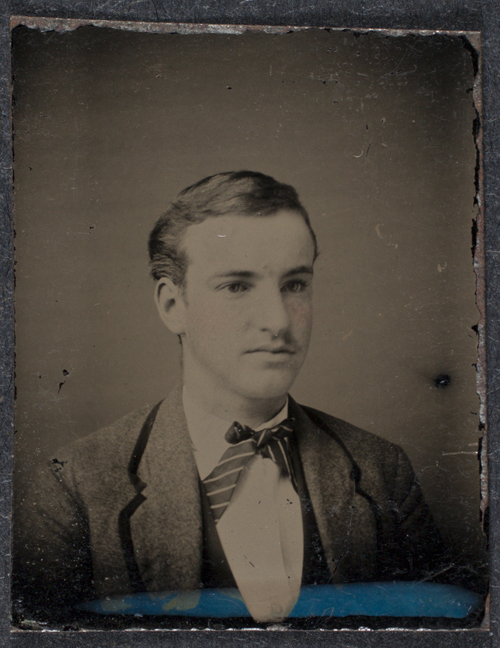
Henry Daniel Boas attended St. Paul’s School from 1867 to 1870 and is a member of the Form of 1872.
According to Arthur Stanwood Pier’s St. Paul’s School 1855-1934 (pg. 92):
In the spring of 1870 two of the boys, James H. Hill and Harry [Henry] D. Boas, built a small sailboat, light enough to be easily carried across the road that separated the upper pond from the lower pond. The whole school made the launching an occasion of ceremony. The boat was carried in a procession of the school to the bank of the pond;
Pier goes on the describe how speeches were made, poems were read, and a flag adorned the boat. Additionally:
… finally, the two year old daughter of the rector, with some assistance, broke a bottle against the stern and christened the boat, which was then “committed to the embrace of the waves.”
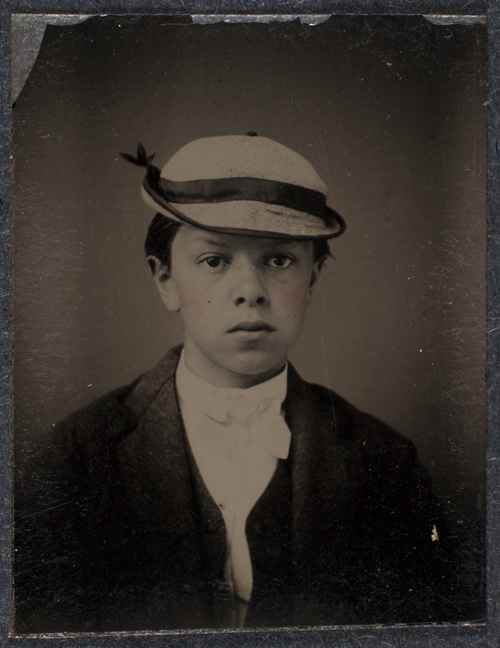
William Edward Pattison French attended St. Paul’s School from 1867 to 1869 and is a member of the Form of 1873.
His obituary appeared in the Spring 1940 issue of the Alumni Horae (pg. 37), and is excerpted below:
Major William Edward Pattison French, U.S.A., was a poet and philosophical writer, as well as a veteran of many campaigns. He was born in Troy, N. Y., on January 16, 1855, was a student at St. Paul’s from 1867 to 1869 and attended the Military Academy at West Point from 1875 to 1877. He was commissioned 2nd Lieutenant in the Third Infantry in 1879 and his first assignment was on the frontiers of Montana and Minnesota, in campaigns with the Sioux and Chippewa Indians. In the Spanish-American War, he participated in the Battle of El Caney, Cuba, and the siege of Santiago de Cuba. He was professor of military science and tactics and commandant at the New York Military Academy for eight years. Although retired as a major in 1916, during the World War he returned to active duty at Fort Myer, Va., until the close of the War.
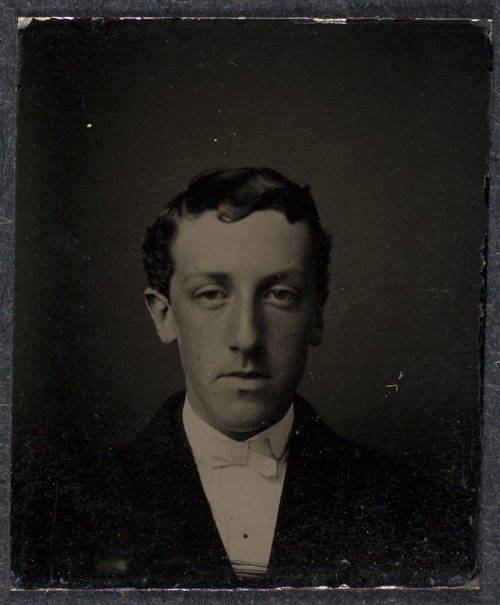
Walter Ingersoll Jones attended St. Paul’s School from 1866 to 1869 and is a member of the Form of 1871.
The following information about Jones was published in the The Harvard Graduates’ Magazine, Volume 10 (pg. 601-602):
At the age of 14 he went to St. Paul’s School, Concord, N. H., but in 1869, having decided to fit for Harvard, he came to Cambridge, and tutored under Prentiss Cummings, ’64. Entering with the Class, throughout the four years of college life he was well known and highly esteemed by his classmates, and in the social life of the Class he was conspicuous. He was a member of the Institute of 1770, A. K. E., Hasty Pudding Club, and A. D. Club, and was also elected a member of the St. Paul’s Society.
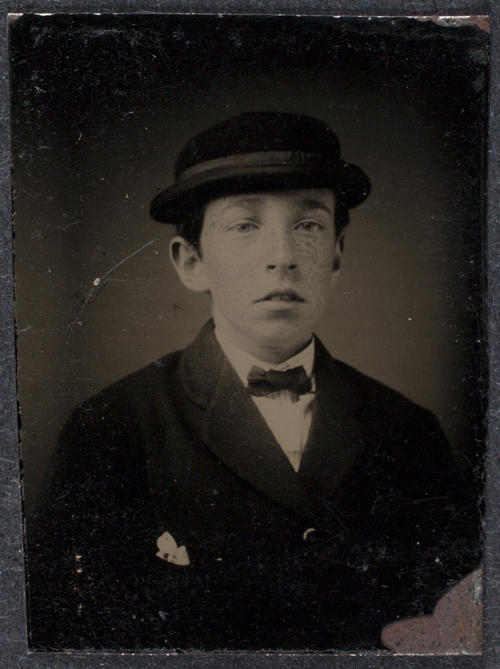
William Robinson Blair attended St. Paul’s School from 1867 to 1871 and is a member of the Form of 1871.
According to Arthur Stanwood Pier’s St. Paul’s School 1855-1934 (pg. 151), in 1871 Blair was a member of the Shattuck crew team, rowing in the 5th position, and competed in the first annual crew race at St. Paul’s School. Shattucks finished in third place due to one of the oarsmen having caught a crab. This first race began the tradition that is still held each Anniversary weekend at St. Paul’s School.
His obituary appeared in the Winter 1921 issue of the Alumni Horae (pg. 22), and is excerpted below:
Mr. Blair was born m the old city of Allegheny, the son of John Cust Blair, a pioneer steel manufacturer associated with the Schoenberger Company, and Anne (nee Robinson) Blair, the daughter of General William Robinson, Jr., the first Mayor of Allegheny. He was a student in St. Paul s School, Concord, N. H., was graduated from Trinity College in 1875 and from Columbia University Law School in 1878. He began the practice of law in Allegheny County soon after graduation, and at one time was associated with the late W. S. Pier in a law firm. Upon the passage of the Federal bankruptcy act in 1898 he was appointed referee for this district. His record in this important position is declared to be unexcelled and he was recognized as an authority in bankruptcy procedure.
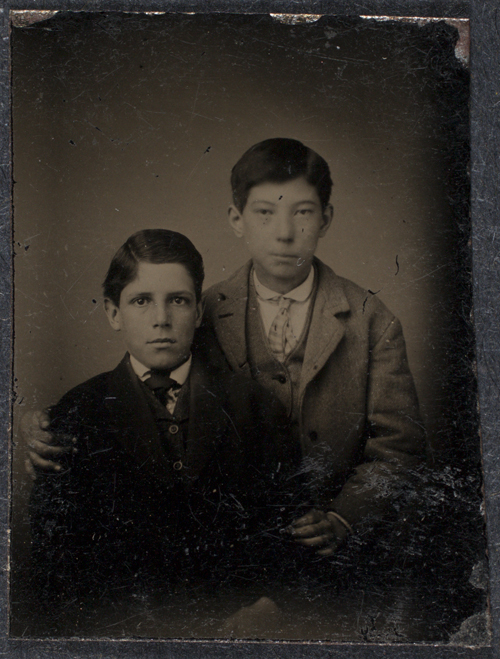
Augustine Monroe attended St. Paul’s School from 1866 to 1868 and is a member of the Form of 1872.
Douglas Robinson Jr. attended St. Paul’s School from 1866 to 1871 and is a member of the Form of 1872.
Robinson married Corinne (Conie) Roosevelt, the sister of Theodore Roosevelt, and is described in the book The Roosevelts: An American Saga, by Peter Collier (pg. 56) as “a large man with a large voice”, and having “an active wit and quick laughter”. Further, it says:
It was Douglas Robinson who acutely observed what others would feel upon marrying a Roosevelt – that one risked being “hung on the family like a tail to a kite.”
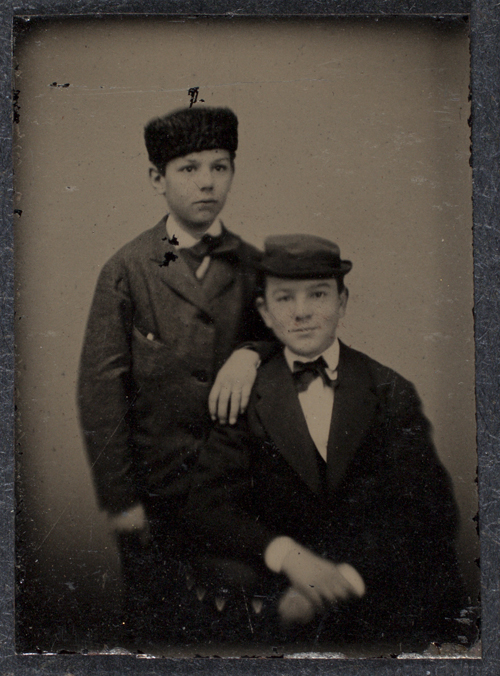
Benjamin Robbins Curtis (right) attended St. Paul’s School from 1868 to 1871 and is a member of the Form of 1871.
Benjamin Solomon T. Nicoll (left) attended St. Paul’s School from 1868 to 1873 and is a member of the Form of 1873.
According to Arthur Stanwood Pier’s St. Paul’s School 1855-1934 (pg. 151), in 1871 Nicoll was a member of the Ariel crew team, rowing in the bow position, and competed in the first annual crew race at St. Paul’s School. The Ariel team was made up entirely of Third Formers, and they finished only two seconds behind the winning Halcyons – Shattucks finished in third place due to one of the oarsmen having caught a crab. This first race began the tradition that is still held each Anniversary weekend at St. Paul’s School.
According to the obituary that appeared in the Autumn 1921 Alumni Horae (pg. 23), Nicoll went on to graduate from Princeton, and then worked as “the head of the iron, steel and coal firm of B. Nicoll and Company of New York.” His brothers Delancey Nicoll, Form of 1870, and Edward H. Nicoll, Form of 1877, both attended St. Paul’s School.
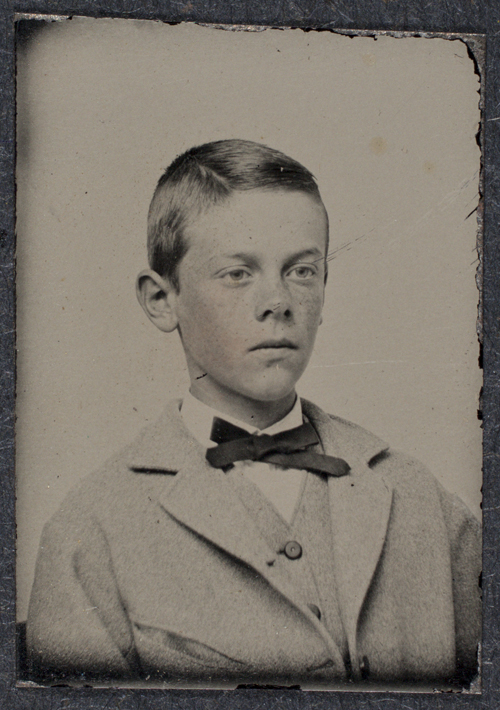
John Torrey Linzee attended St. Paul’s School from 1867 to 1872 and is a member of the Form of 1873.
The following information about Linzee was published in the Harvard College Class of 1877 seventh report (pg. 150-51):
Born at Nahant, Mass., Aug. 6, 1856. Son of Thomas Coffin Amory and Sarah Parker (Torrey) Linzee. Prepared at St. Paul’s School, Concord, N. H., and Hopkinson’s School, Boston, Mass. In College: 1873-77. . .
After leaving college Linzee went to Europe in June, 1877, and traveled on the Continent until Dec., 1878, when he returned to Boston. He went into business Feb. 1, 1879, with the firm of E. Rollins Morse & Brothers, brokers, as a clerk, and was made a partner in 1891, but had to retire in 1899 on account of illness. His health improving, he again took up business as manager of the office at Bar Harbor, Me., of Hayden, Stone & Company, brokers, which he finally gave up after five years’ service, since he had the misfortune to break both his legs at the ankle in 1915. His winters were passed in Boston, Mass., and his summers at Bar Harbor, Me.
Harvard, Hopkinson’s School, Boston, Bar Harbor
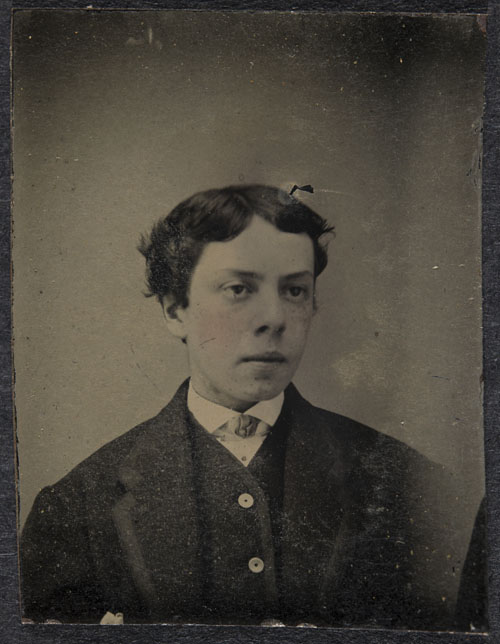
James Armstrong Canfield attended St. Paul’s School from 1866 to 1869 and is a member of the Form of 1871.
James A. Canfield was the owner of a gem tintype album in the archives collection, but his own tintype was not part of that collection. When Grenville Kane’s gem tintype album was later donated Canfield’s tintype image was found there among Kane’s other friends.
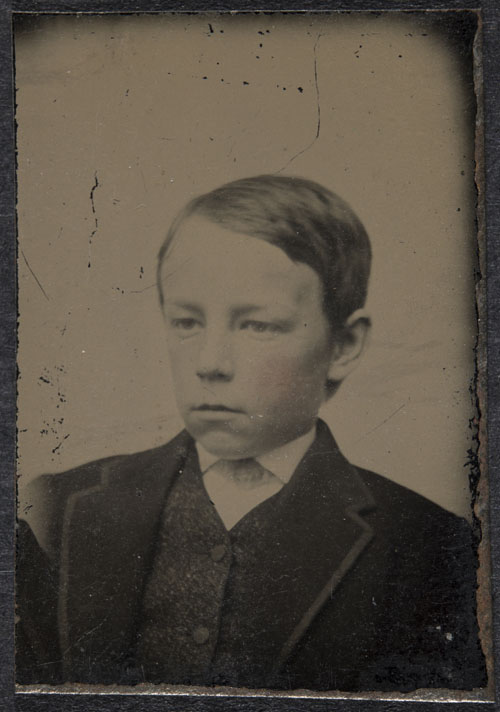
Alexander Porter Browne attended St. Paul’s School from 1865 to 1869 and is a member of the Form of 1869.
His obituary, published in the Boston Globe on July 8, 1920 (pg. 3) says:
Mr. Browne was one of the foremost American counsels on copyrights, patents and trademarks and had represented noted authors and foreign interests in his long legal practice.
His father, Causten Browne, was also a lawyer. Alexander graduated from Harvard Law School in 1876.



